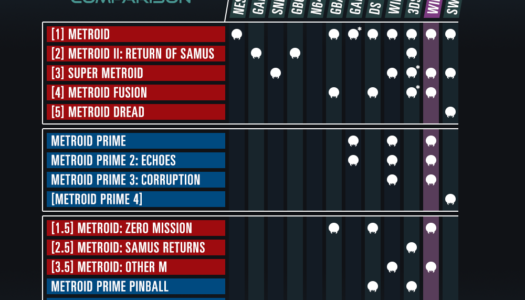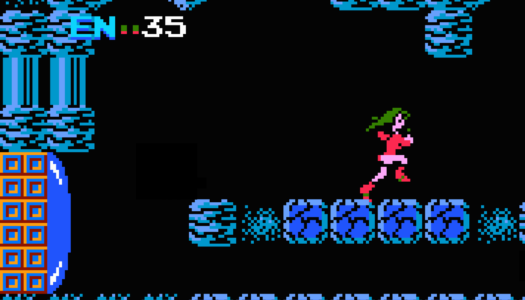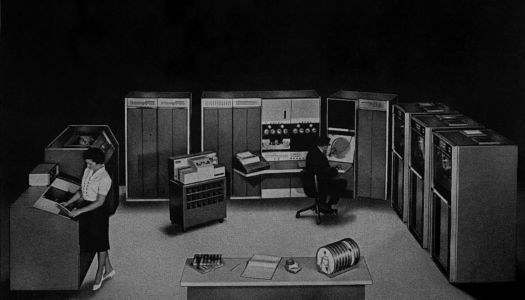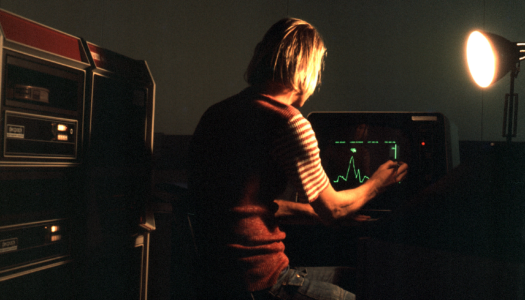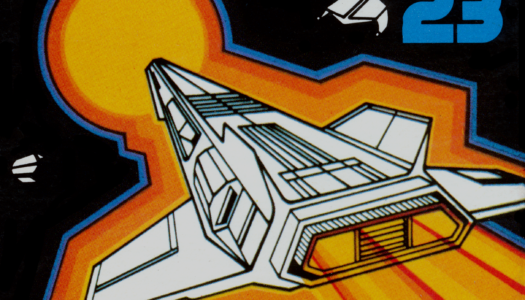Insanely Twisted Shadow Planet

Publisher: Microsoft Game Studios / Developer: Fuelcell Games, Gange International / Platform: PC, XBLA
I don’t know about you, but the first time I saw Samus Aran exit her ship at the beginning of Super Metroid, I hoped I’d get to fly it at some point.
You never do, of course. It was just a clever way to insert a save point early in the game. But what if you did? What if you got to navigate the “Metroidvania”-esque labyrinth of large caves beneath the planet’s surface from inside your ship, finding weapon and shield upgrades as you went, while shooting at enemies with the twin-stick controls of a scrolling shooter?
Take that concept and add art direction reminiscent of Limbo, and you basically have Insanely Twisted Shadow Planet. For fans of “Metroidvania” style level-designs that emphasize exploration, and who love wonderful visuals, this game is an absolute treat. Except when it’s not. But I’ll get to that.
Insanely Twisted Shadow Planet is the brainchild of animator Michel Gagne, loosely based on a series of interstitials he did for Nickelodeon in 2005. His previous animation credits have included work for Pixar, Don Bluth, and Warner Bros., and it shows in the fluid movements of the enemies and environments. The intro and other short non-game animated sequences are paired with epic orchestral arrangements that help set the tone—at times reminding me of Danny Elfman’s Batman theme—supplied by the Prague Philharmonic Orchestra covering songs by black metal group Dimmu Borgir.
Exploration is the name of the game. Your ship gains a variety of abilities as you go, but you start the game with only two: a mechanical arm to grab things, and a scanner to help you explore. All the instructions in the game are communicated wordlessly via the scanner, indicating pictorially what an object does, how to interact with it, or how to defeat it.
You switch between your ship’s abilities using a selection wheel, which appears by holding the right bumper. This is an interesting innovation, allowing you to switch weapons or abilities on the fly, without having to pause to go to a menu. This has advantages and disadvantages, as it’s a much quicker solution, but also allows enemies to attack you while you’re choosing. Fortunately, you’re also able to set quick keys for four of those abilities, assigning them to the four face buttons of your controller. But you’ll likely find yourself reassigning them somewhat frequently, as different areas require different abilities be used more often.
The topic of controls brings me to my first complaint, which is a minor but constant annoyance. Pressing the Start button brings you to the menu, and pressing Back brings you to the map. Logically, one would think that pressing Start again while in the menu would cause you to exit, as would pressing Back again while in the map. Instead, pressing Back while viewing the map brings you to the menu, and pressing Back a third time brings you back to the map. In order to exit the map, you must either press Start (when you’d think that would just bring you to the menu), or press B.
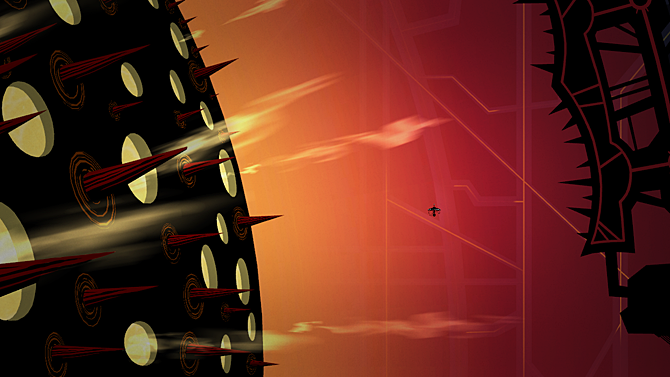
The level design also isn’t flawless. There are many elements in the backgrounds that at first sight look as though they could hurt you. I found myself keeping my distance from black spikes sticking out of the black walls, before eventually realizing they were just background elements. However, this idea that the entire world appears hostile and threatening, even when it’s not, is an interesting enough idea that I could almost imagine it being intentional.
What is likely unintentional, though, is being unable to tell when a background element is actually in the background, or is an obstacle to navigate around. Random designs in the background will sometimes be the same shade of black and have the same visual significance as random branches or things that are actually in the foreground for you to run into. Granted, running into these immobile objects won’t hurt you, but they do become annoying at times, and make the game feel not as well designed.
Then, there are the missile puzzles. The first real frustration I encountered in the game was an occasional puzzle that requires you to navigate a missile through a narrow tunnel that winds around quite a bit. Which wouldn’t be so bad, if the missile didn’t handle something like a drifty version of the Super Sheep from Worms 2. But I have a particularly low tolerance for having to fail something over and over in order to get good enough to pass it, so Your Mileage May Vary.
There’s also a degree of fake difficulty, such as a few areas where you might get hit by something that was offscreen just a moment ago, but that you couldn’t see because the screen is purposely zoomed in too far for that section.
But by far, the real fun killer is the final boss (and perhaps the second to last boss). The boss fights earlier in the game aren’t extremely difficult, and some of the boss or mini-boss fights have a checkpoint system of sorts, so that you’re not completely starting the fight over if you die. But the last two boss fights have none of that. If you die, you’re starting the fight from the beginning.
The second to last boss, the boss of the Electrical Zone, came across as so cheap that when I did finally beat it, the win felt completely unsatisfying. So when I encountered the final boss soon after, and it ended up being even more difficult, slowly making my way through a web of lasers while being bombarded with missiles, I lost any desire to continue dying-and-retrying. After dying enough times, it sapped all the fun right out of the game.

The lack of a story is also a little unsatisfying. The game opens with a sequence where a planet is being invaded by shadow creatures, and the main character flies into the shadow-corrupted sun to stop it. Collecting Artifacts gives you additional animated sequences, but unfortunately they don’t feature anything that seems significant. The scenes are about eight seconds each, and fly by so fast that you’re not sure if it was just too quick for you to ingest, or if there was nothing there. A second viewing, from the menu, seems to indicate the latter. If you end up being inspired to collect all the artifacts, its going to be for an Achievement or for the sake of completion, not for the video snippets.
The multiplayer co-op mode is similarly flawed. Lantern Run involves two to four players carrying lanterns across a level of randomly generated sections, while being chased by a large creature. While it has a lot of potential for being a fun side-mode, the most difficult part ends up not being dodging the enemies that try to kill you, but rather trying to push a wall of rocks around enough to be able to get your lantern through before the creature gets you. How easy or difficult the rocks are to clear is completely random, based on how they’re set, rather than relying on your skill.
I hate to sound like I’m just completely ragging on the game, because I did enjoy it a great deal other than the later boss fights and the missile puzzles, and I loved the visuals. Overall, fans of “Metroidvania” type exploration games will find Insanely Twisted Shadow Planet to be a treat, if an at times Insanely Hard one. Like eating a delicious ice cream sandwich on a warm day, only to bite into a piece of gravel that somehow got mixed in.










